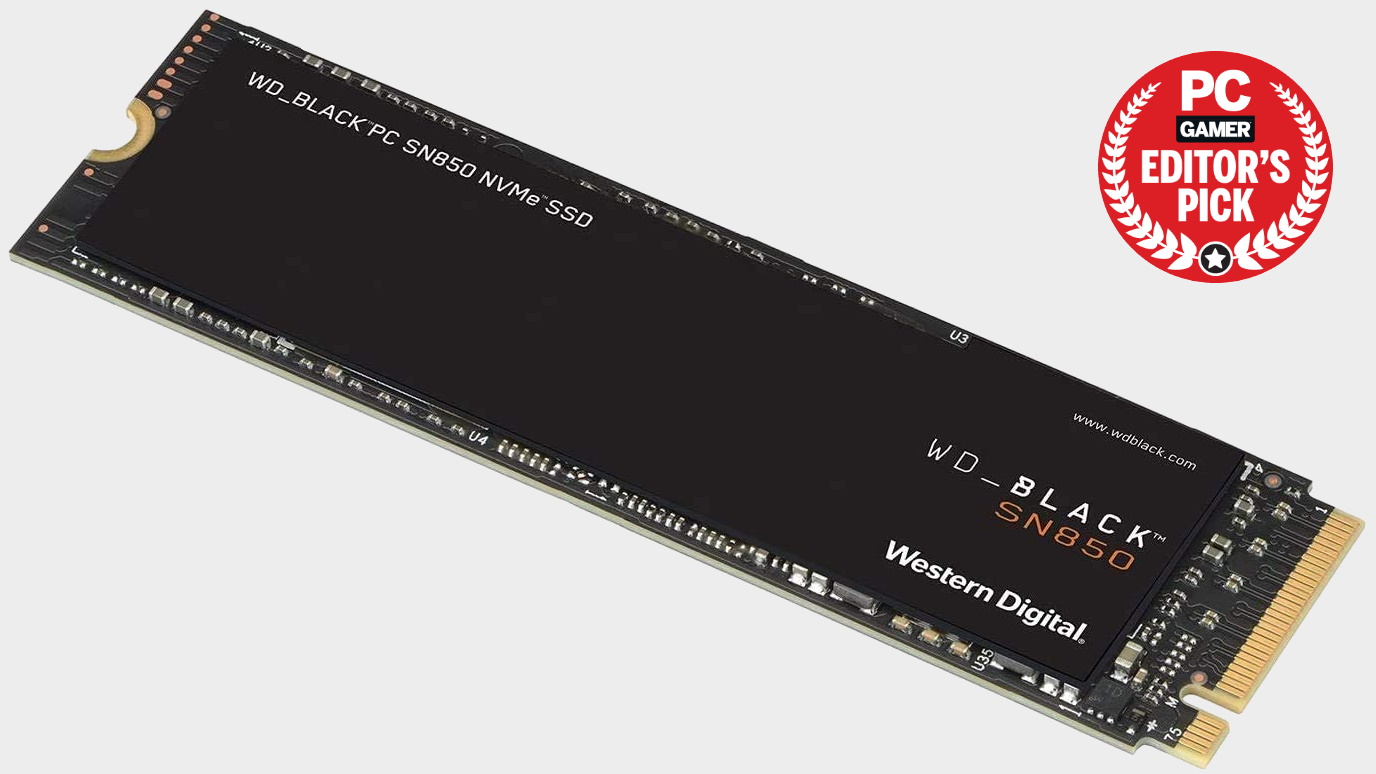Our Verdict
The WD SN850 is the fastest PCIe 4.0 SSD you can buy. Incredible sequential and random throughput makes for a drive that's way ahead of the pack.
For
- Blistering PCIe 4.0 throughput
- Excellent real-world performance
- Solid warranty
Against
- Runs hot
PC Gamer's got your back
The WD Black SN850 1TB drive is the fastest PCIe 4.0 NVMe SSD you can buy right now. It may not top every test in every benchmark, but when it comes to real-world benchmarking, there's nothing else that can touch it. Don't get me wrong, it does well across the synthetic benchmarks, topping plenty of them, but there are a few places where the Sabrent Rocket 4 Plus or the Samsung 980 Pro have the edge, but overall that doesn't take away from the fact that this is the pinnacle of storage right now.
Capacity: 1TB
Interface: PCIe Gen4 x4
Controller: WD_Black G2
NAND: BiCS4 96-layer TLC
Rated seq. read: 7,000 MB/s
Rated seq. write: 5,300 MB/s
Endurance: 600 TBW
Warranty: 5 years
Price: $229 (£196)
Western Digital was a bit late to the PCIe SSD party but quickly made up for it with the WD SN750, which has been a solid entry in our best SSD for gaming guide for a long time. If you're still rocking a PCIe 3.0 platform, then it's still a great option. The point being, that WD hasn't come out of nowhere to grab the performance crown, and that its focus on performance has paid off.
It helps that Western Digital is in a great position for building quality SSDs, in that it produces everything it needs in house, from the proprietary memory controller to the NAND flash and the RAM. It's all in house, and that means it can push everything that little bit harder than a manufacturer using off the shelf components, and it shows.
Pushing the components hard, however, obviously manifests in one other key area—temperature. The 1TB version of the drive is single-sided, which should mean it runs a little cooler than the 2TB double-sided offering. Which might be a little alarming, because this is not a cool running drive, coming in 10°C hotter than the other PCIe 4.0 drives I've been testing lately. It hit 77°C in the test rig, and that's using the motherboard's included heatsink.
If your motherboard doesn't have a bundled heatsink, then you may need to look at the $20-more expensive version of the drive—it uses the shipping container aesthetic of Western Digitals external drives. Which, personally speaking, looks good, although whether you can spot it in your case is a different matter. If you can aim some active cooling at the drive, then that'll be even better. We didn't notice any throttling in testing, although it's something to be aware of.
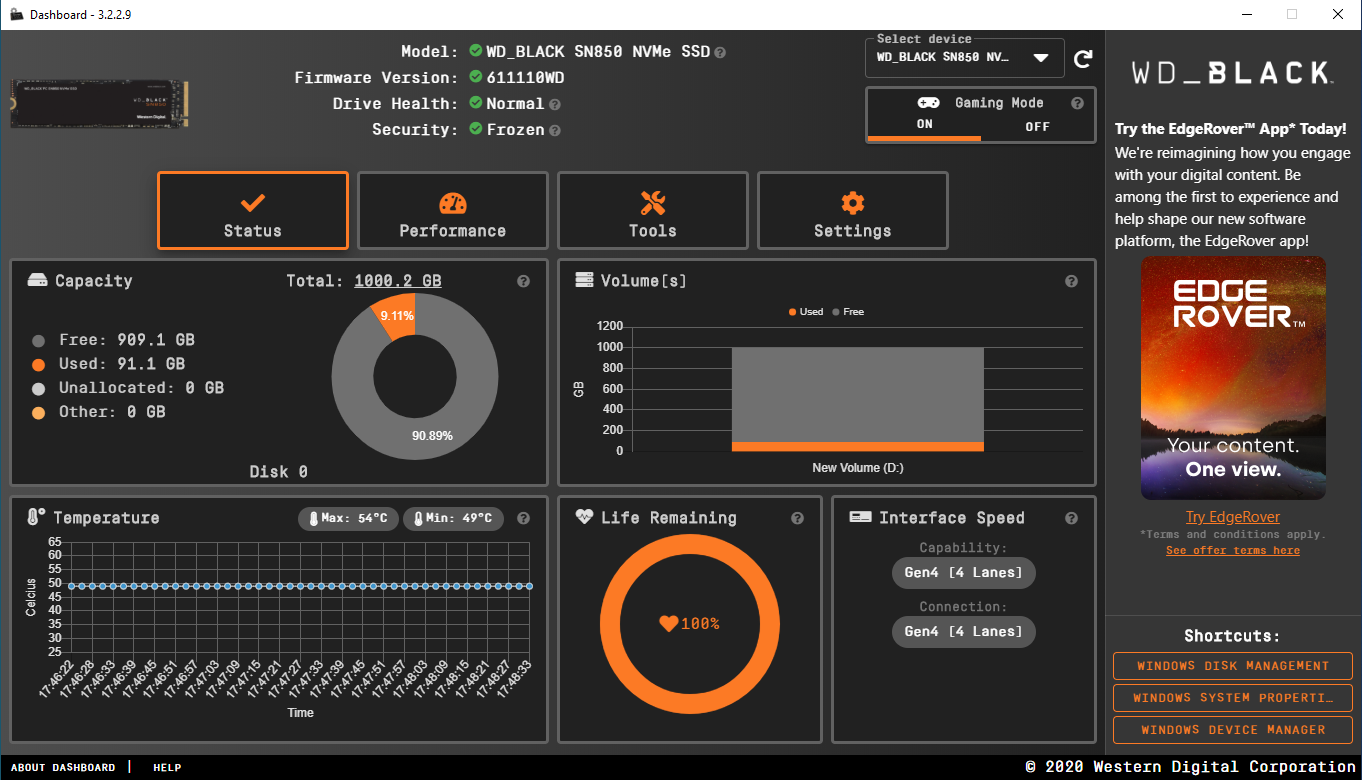
You can track temperatures in Western Digital's Dashboard app. I still have a problem with Western Digital thinking it's fine to have an advertising block in its toolbox software, as this is something that is only useful if you've bought one of its drives. And these things aren't cheap. That niggle aside this is one of the better interfaces around, with plenty of information on the drive's status, performance, tools for updating the firmware, and access to Acronis True Image for duplicating an existing drive across.
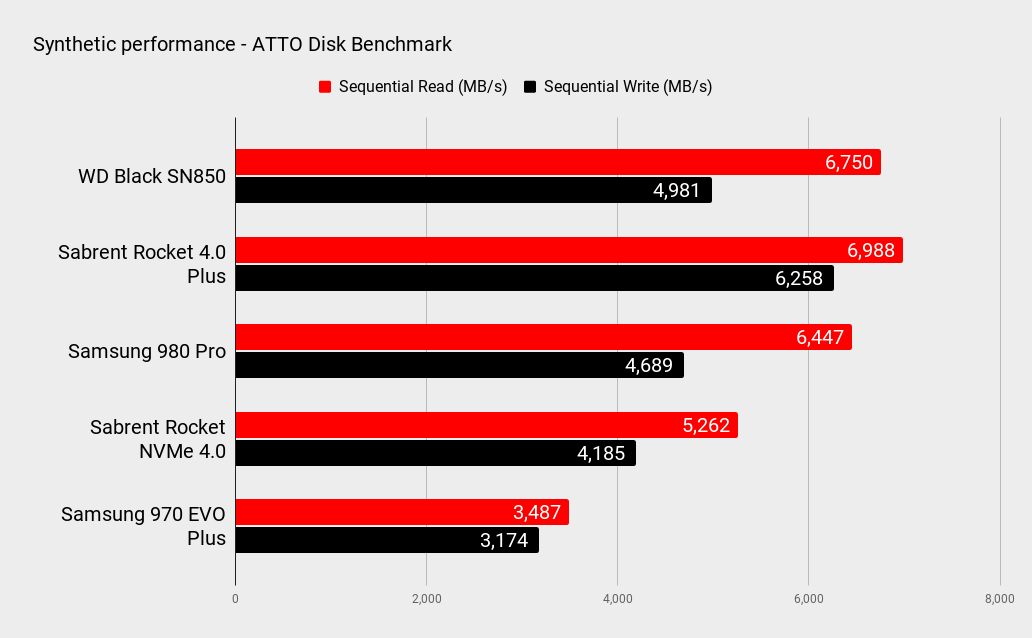
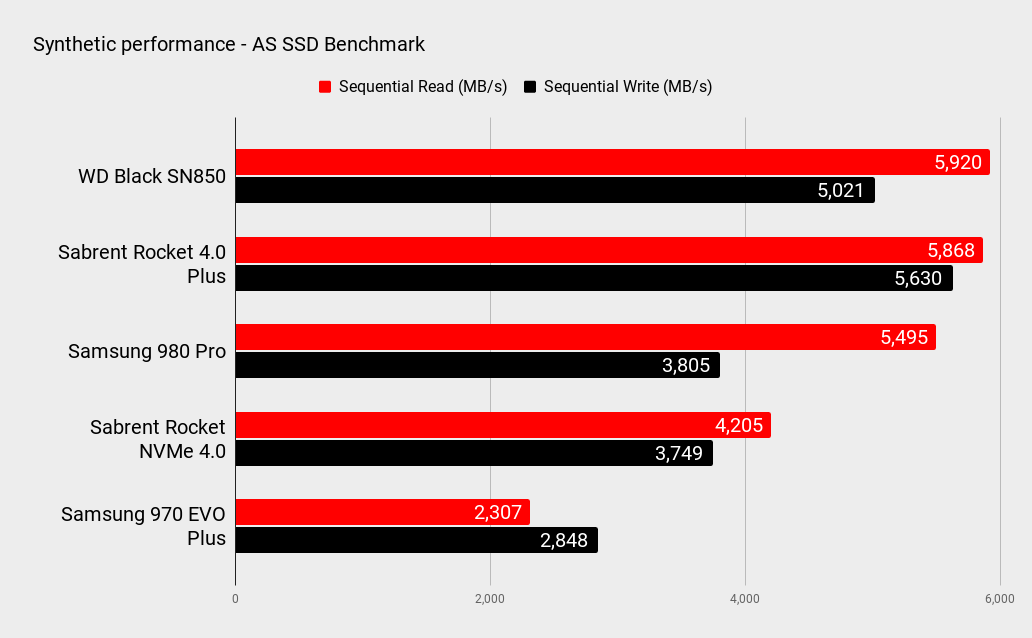
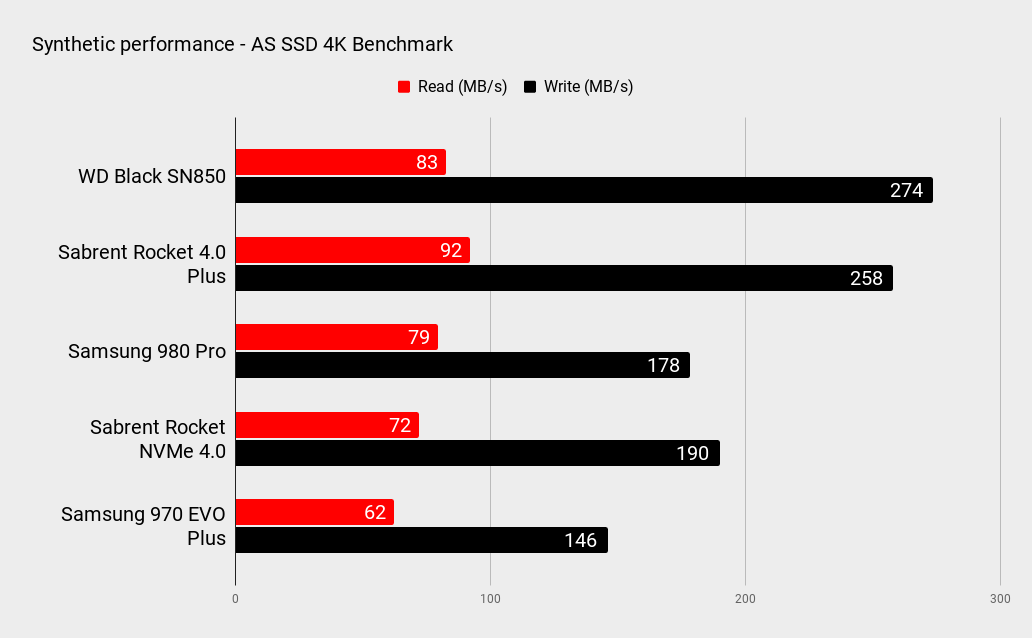
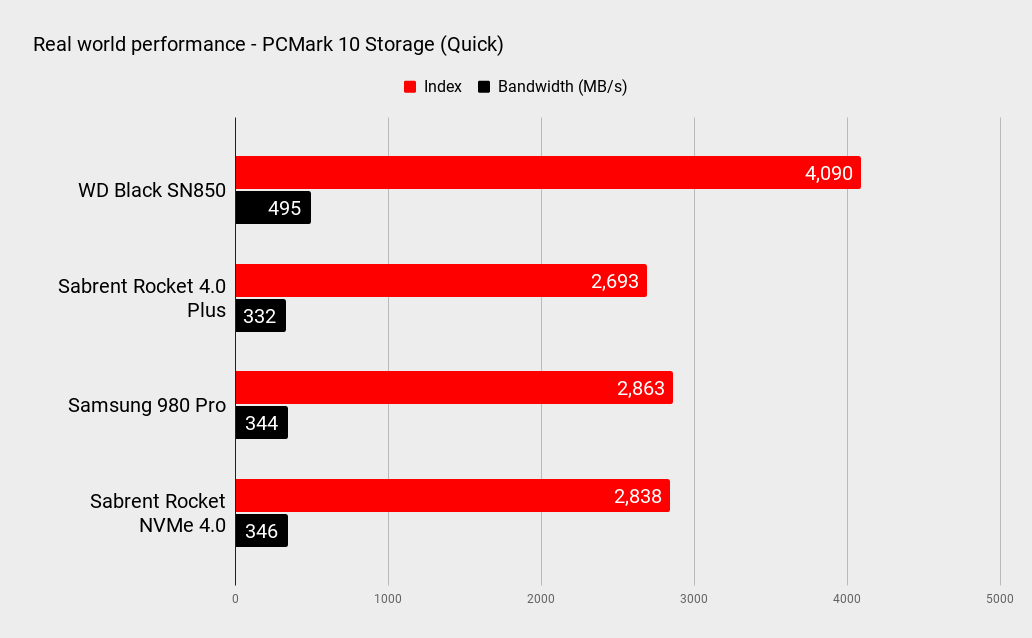
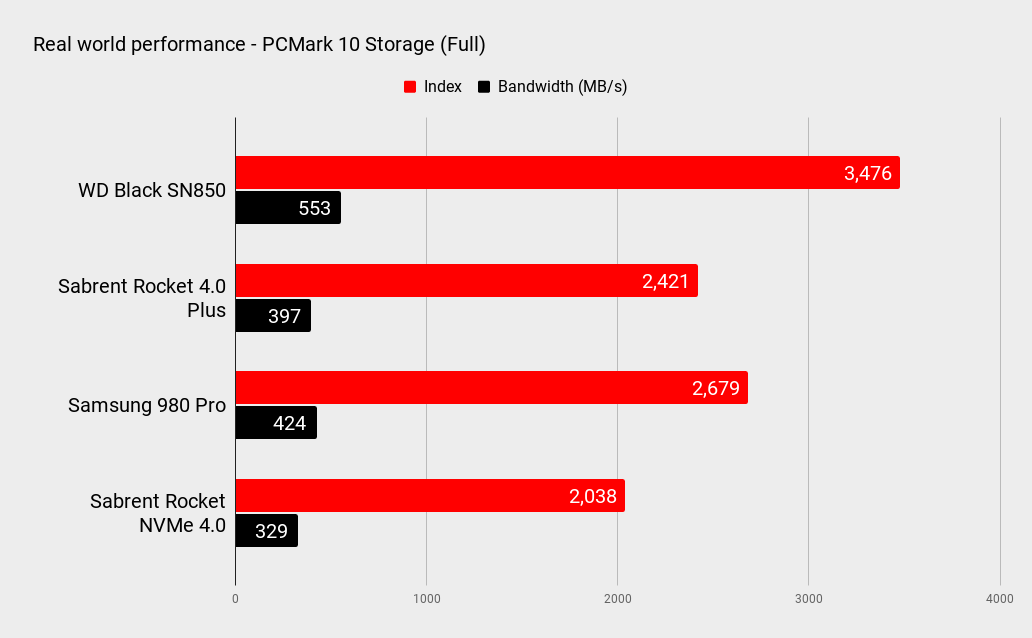
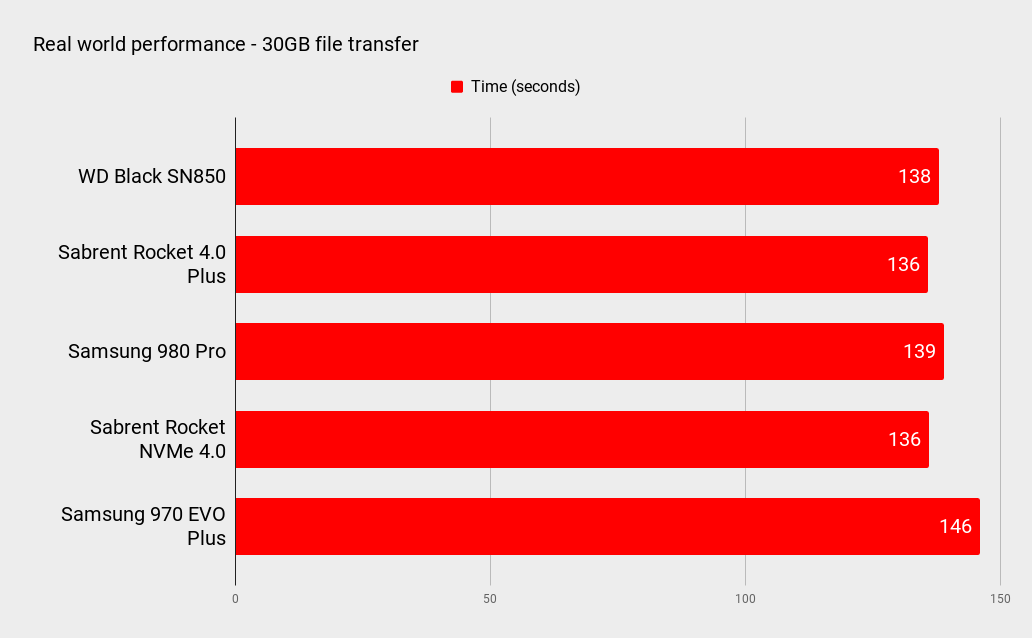
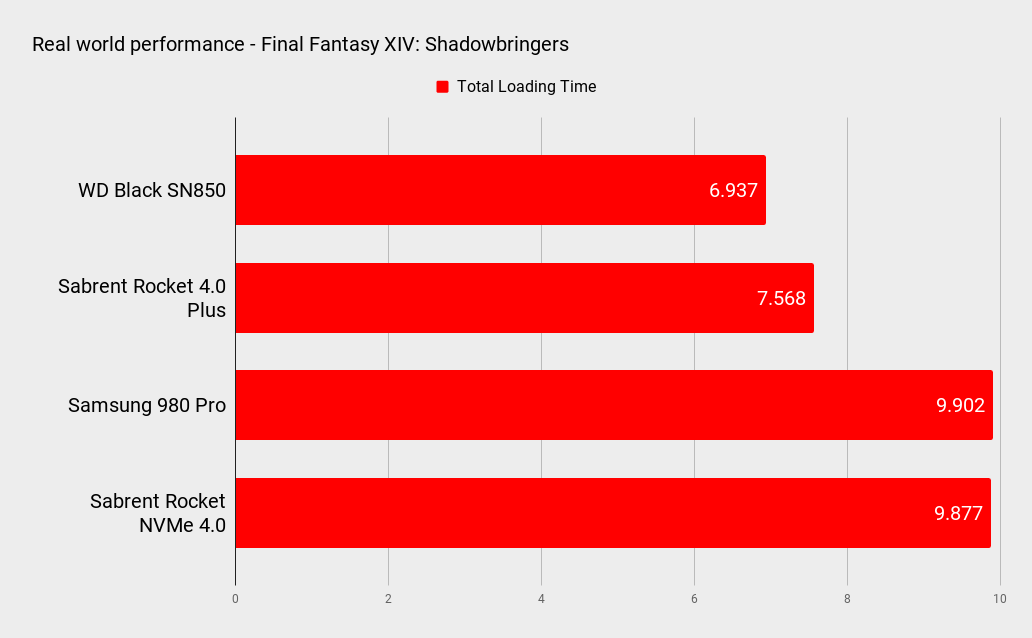
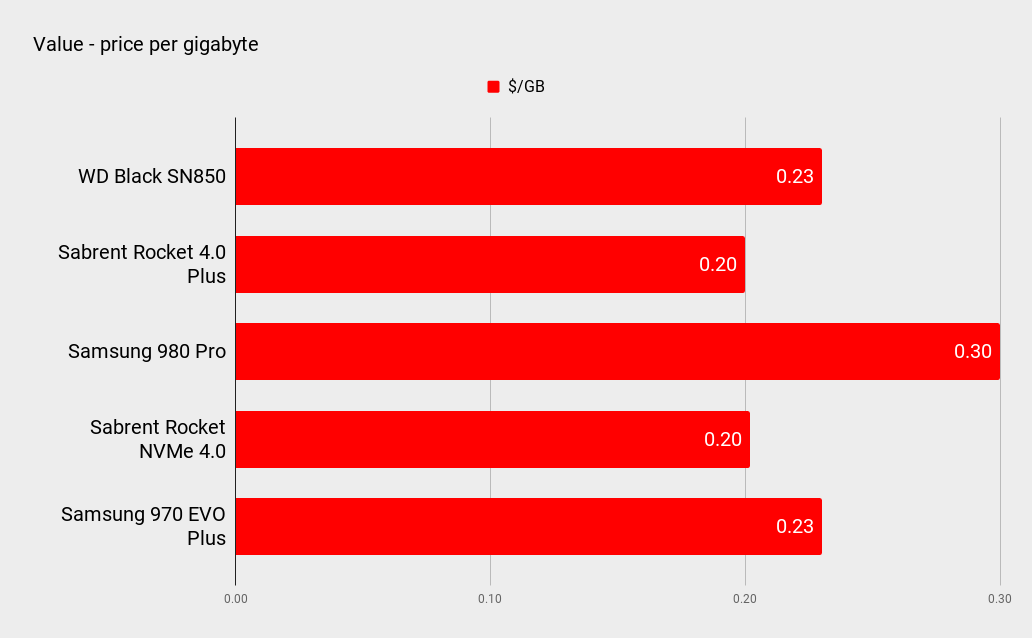
Any SSD is ultimately defined by its performance, and as stated in the introduction, it's here that the WD SN850 really stands out from the crowd. The synthetic benchmarks, spearheaded by ATTO and AS SSD, show that this is very much a second-generation PCIe 4.0 drive, with peak sequential read speeds knocking on 6,750MB/s and 5,920MB/s respectively. Writes are lower than the Sabrent Rocket 4 Plus, but still healthy, at either side of 5GB/s. The 4K write performance in AS SSD manage to flip this over as well, with the WD SN850 managing to outpace the Sabrent drive.
It's the real-world performance tests that impress the most though, with PCMark 10's Quick and Full storage tests putting the SN850 way ahead of the field. With an overall throughput of nearly 495MB/s in the Quick test and 550MB/s in the Full benchmark, this is a drive that just keeps powering on in day to day use.
The fact that this performance is echoed in the Final Fantasy XIV benchmark, which has the SN850 loading the five different scenes in a shade under seven seconds for the first time, impresses no end. When plenty of 'fast' SSDs still take 12 seconds to complete the same task, that proves what difference the latest technology can have on gaming performance.
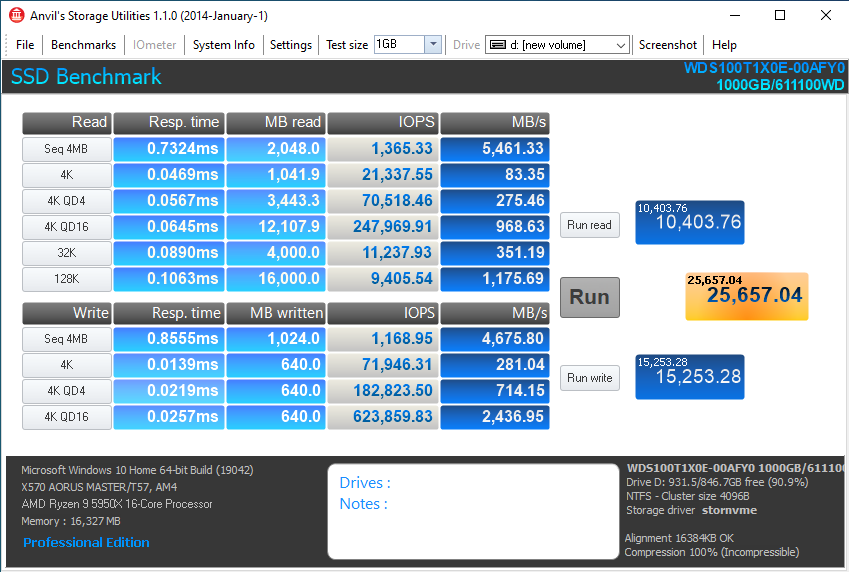
Western Digital has been on an impressive run of late. The WD_Black AN1500 brought stunning performance to PCIe 3.0 platforms, while it's external next-gen SSDs, like the P50, have done well in our testing too. As we've said, the SN750 was a decent contender in terms of cost/performance for last-gen consideration too.
The SN850 builds on all of that to stand head and shoulders above the others to be the performance drive you want in your gaming PC. Which brings us to the pricing. The closest drives to this in terms of performance are the Sabrent Rocket 4 Plus and the Samsung 980 Pro. The Sabrent is $30 cheaper than this, at a straight $200, which gives it a slight edge in terms of value for money.
The Samsung 980 Pro, which had the edge for a few months, is left out in the cold, especially as it costs the same as the SN850, but loses out to the newer drive in every metric (apart from operating temperatures). Neither is a bad drive, obviously, but if we had to recommend a next-gen SSD right now, there's only one clear option, and that's the WD SN850. It's simply the best drive you can buy today.
The WD SN850 is the fastest PCIe 4.0 SSD you can buy. Incredible sequential and random throughput makes for a drive that's way ahead of the pack.
Alan has been writing about PC tech since before 3D graphics cards existed, and still vividly recalls having to fight with MS-DOS just to get games to load. He fondly remembers the killer combo of a Matrox Millenium and 3dfx Voodoo, and seeing Lara Croft in 3D for the first time. He's very glad hardware has advanced as much as it has though, and is particularly happy when putting the latest M.2 NVMe SSDs, AMD processors, and laptops through their paces. He has a long-lasting Magic: The Gathering obsession but limits this to MTG Arena these days.
